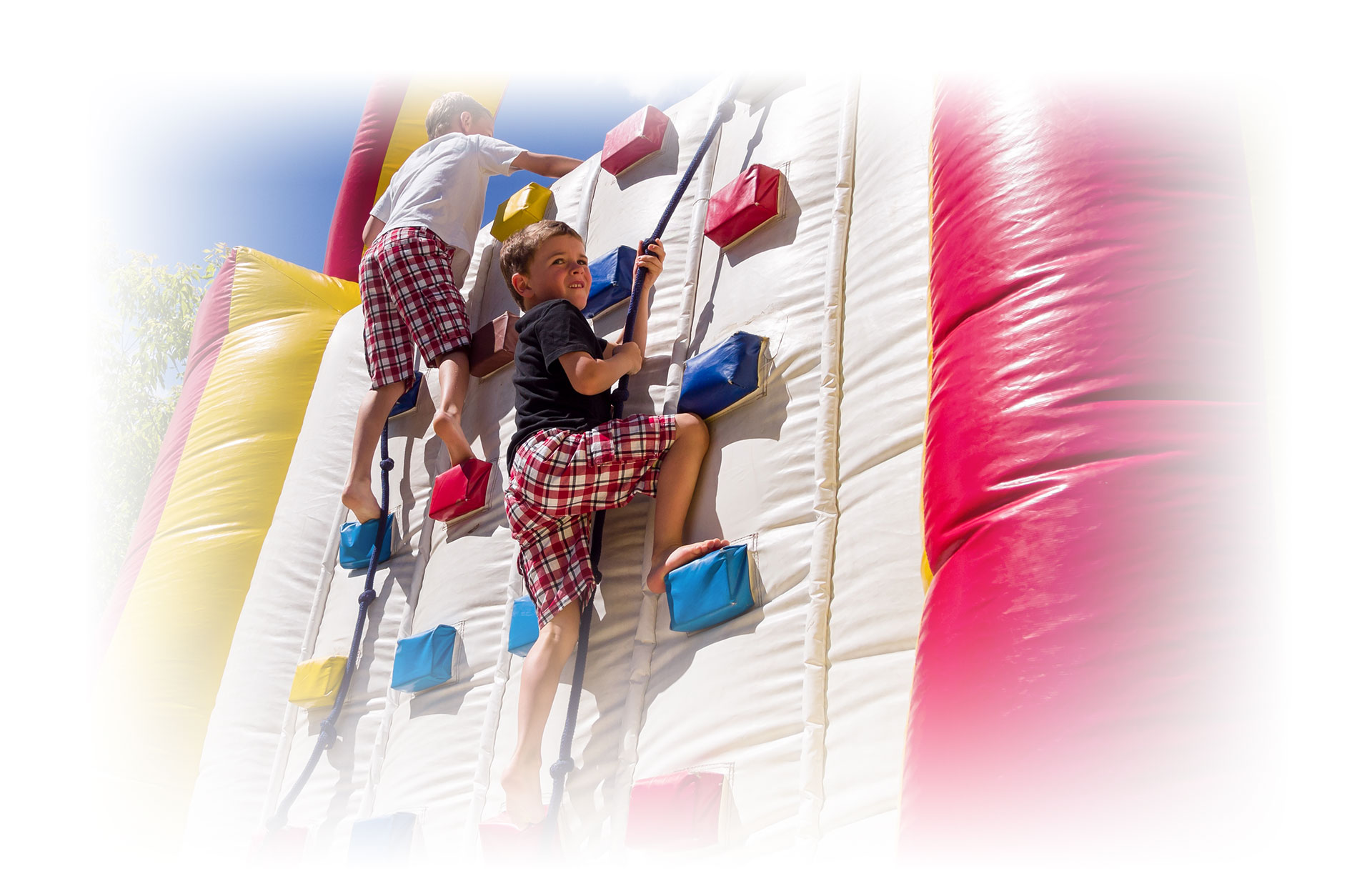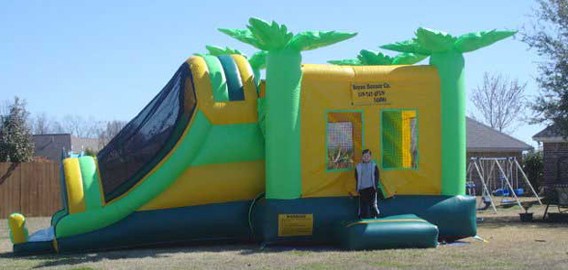Summer block party season is here and that means inflatable bounce houses will be springing up in neighborhoods across the country. As kids jump into this fun summer activity it’s important to ensure they are safe.
“Bounce houses are a great way to get kids active and are considered a relatively manageable risk since severity of injuries is usually less than that of a trampoline. Still, injuries and fractures are fairly common from bounce house play, and parents need to supervise the children,” said Teresa Cappello, MD, pediatric orthopaedic surgeon at Loyola University Health System and Assistant Professor in the Department of Orthopaedic Surgery at Loyola University Chicago Stritch School of Medicine.
The most common bounce house injury in children occurs in the upper extremities, especially the elbow. The injuries usually are caused by a collision between jumpers, a fall onto an outstretched hand inside the bounce house or if a child falls out of the bouncer.
“Though bounce houses are a great source of entertainment for kids, they still require adult supervision. If you have a bounce house in your backyard or neighborhood party, please make sure a responsible adult is monitoring what’s going on at all times,” Cappello said.
Injuries inside bounce houses commonly happen when children of different ages and sizes are jumping at the same time. Cappello suggests parents place the children into small groups by age and size and have an adult at the entrance to ensure the appropriate kids are playing together and that no one falls out.
“I have had to take my own kids out of bounce houses because they were in danger. If you have a 4-year-old and 12-year-old bouncing together, someone is going to get hurt. Parents need to enforce the separation of ages when playing and have kids take turns in the house,” Cappello said.
It’s also important to limit the number of children in a bounce house at a time. If there are too many children, they are more likely to fall out of the entrance and injure themselves on the hard ground.
“It’s more fun for kids if they have space to jump and play, and it’s always a good lesson to learn to take turns. If you’re planning a party, add bounce house monitor to your list of volunteer duties. Adult supervision really is the best way to prevent injuries,” Cappello said.
If a child is injured Cappello says to separate the child out from the crowd and examine the injury. If there is a physical deformity or asymmetry in the extremities, she says to go immediately to the emergency room. If the extremity looks normal, it’s ok to wait until the next day. If the pain has not resolved, then it’s best to see a doctor .
“Often parents think if a child can move the arm, then it’s not broken. This is not always the case in kids. Many times children are able to move their arms even if there is a broken bone. If the child is still in pain the following day, even if the child can move the injured extremity, he or she should be seen by a physician and have an x-ray,” Cappello said.
As with all physical activities, bounce houses have their risks. But with adult supervision and a few rules, it can be a great physical activity for kids.
“All childhood activities have a certain level of risk of injury. As parents we have to realize kids will sometimes get hurt, but we need to be vigilant to help avoid them as much as possible and keep our kids safe from serious injuries,” Cappello said.
Article provided by News Wise.


